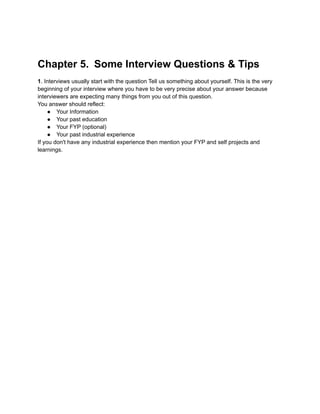Object-oriented programming (OOP) is a type of programming based on objects rather than just functions and procedures. The key features of OOP include inheritance, encapsulation, polymorphism, and data abstraction. A class defines common properties for objects, while an object is an instance of a class. Inheritance allows classes to inherit properties from other classes. Encapsulation binds data and code together within an object. Polymorphism allows the same interface to have different implementations. Data abstraction hides implementation details within an object.
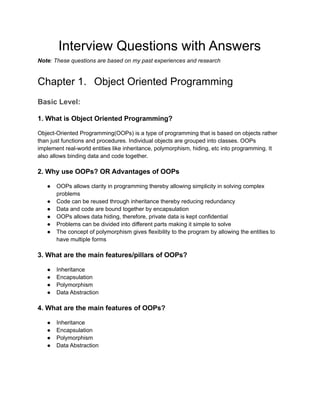

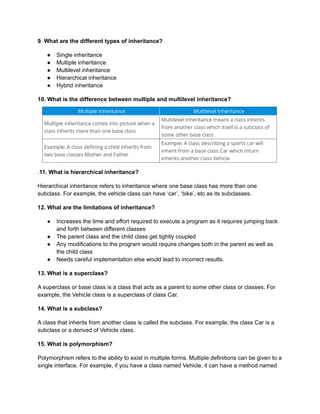


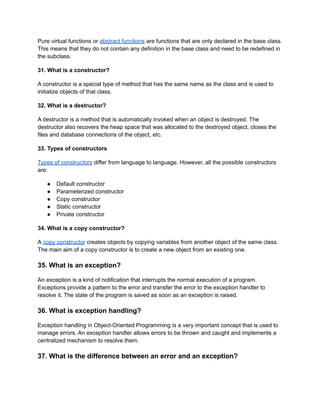
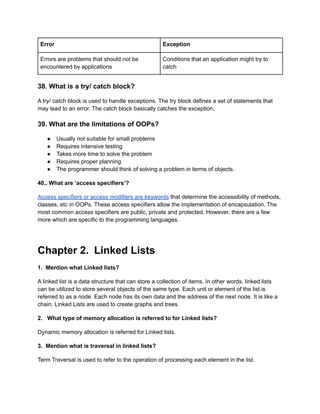

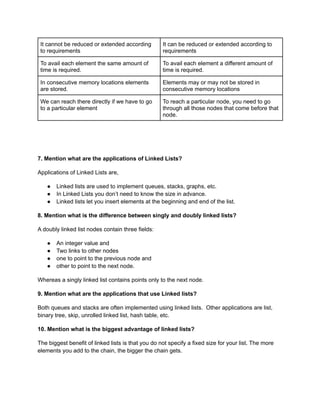
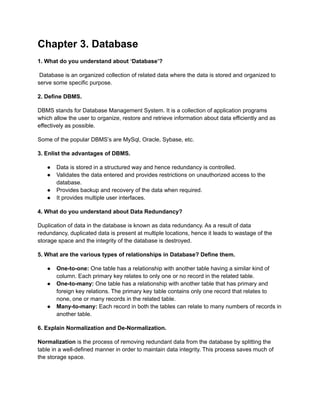
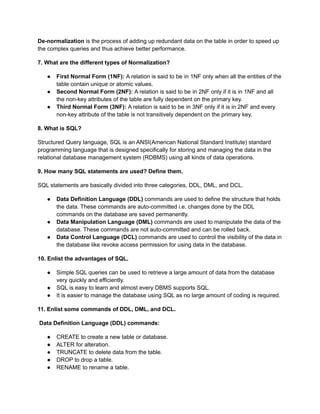
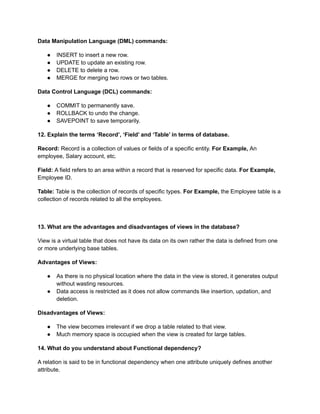
![For Example, R is a Relation, X and Y are two attributes. T1 and T2 are two tuples. Then,
T1[X]=T2[X] and T1[Y]=T2[Y]
Means, the value of component X uniquely defines the value of component Y.
Also, X->Y means Y is functionally dependent on X.
15. When is functional dependency said to be fully functional dependent?
To fulfill the criteria of fully functional dependency, the relation must meet the requirement of
functional dependency.
A functional dependency ‘A’ and ‘B’ are said to be fully functional dependent when removal of
any attribute say ‘X’ from ‘A’ means the dependency does not hold anymore.
16. What do you understand by the E-R model?
E-R model is an Entity-Relationship model which defines the conceptual view of the database.
The E-R model basically shows the real-world entities and their association/relations. Entities
here represent the set of attributes in the database.
17. Define Entity, Entity type, and Entity set.
Entity can be anything, be it a place, class or object which has an independent existence in the
real world.
Entity Type represents a set of entities that have similar attributes.
Entity Set in the database represents a collection of entities having a particular entity type.
18. Define a Weak Entity set.
Weak Entity set is the one whose primary key comprises its partial key as well as the primary
key of its parent entity. This is the case because the entity set may not have sufficient attributes
to form a primary key.
19. Explain the terms ‘Attribute’ and ‘Relations’
Attribute is described as the properties or characteristics of an entity. For Example, Employee
ID, Employee Name, Age, etc., can be attributes of the entity Employee.
Relation is a two-dimensional table containing a number of rows and columns where every row
represents a record of the relation. Here, rows are also known as ‘Tuples’ and columns are
known as ‘Attributes’.](https://image.slidesharecdn.com/softwareengineerinterviewquestions-220430110130/85/software-engineer-interview-questions-pdf-13-320.jpg)






